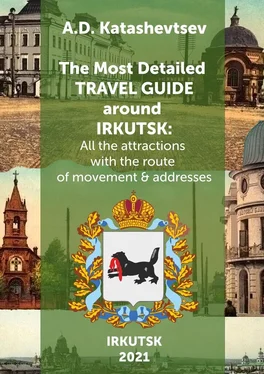The opposite side of the street is occupied by a residential building built in 1987 in the brutalist style according to the project of V.A. Pavlova. At the intersection with Zhelyabov Street on the left, is Michurin’s blue estate with store.
Further, on the Dekabr’skikh Sobytiy Street attention is drawn to Shipunov estate with a stone first floor located on the right. After it is the former Yakovlev‘s apartment building with an arms shop.
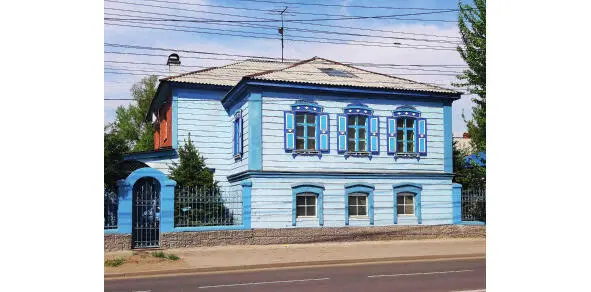
Michurin’s estate with store
But more attention attracts the huge stone mansion in poor condition on the other side of the intersection. This is the estate of famous Irkutsk merchants and benefactors known as Medvednikovs, after whom the modern Khalturin Street was once named. They were the founders of the first bank in the history of Irkutsk, as well as the first gymnasium for girls in Siberia. The building itself was created back in 1795 according to the project of A.I. Losev and now requires immediate restoration.
Here we turn right on Khalturin Street in order to admire the mansion of the city architect A.P. Artyushkov in a classic style (Khalturina st., 21), which was recently restored. The street, named after the author of the terrorist attack in the Winter Palace in 1880 S.N. Khalutrin, ends at the fence of the shopping center “Fortuna”.
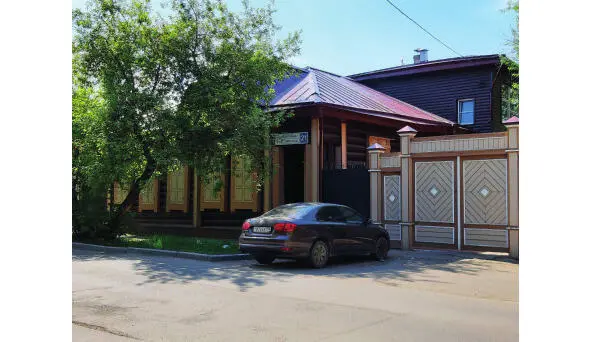
Mansion of the city architect A.P. Artyushkov
In the past, all trading floors here were occupied by the firstborn of mechanical engineering in the Irkutsk region – the heavy machinery plant named after V.V. Kuybyshev. It arose in this part of the city in 1930 on the basis of E. Khanov’s transport workshops, where military transport was repaired and produced for the needs of Siberia and the Far East. After the revolution, the main profile of the enterprise was the production of gold mining equipment. In 1968, the world’s largest river scoop dredge (length 236 m, width 50 m, height 54 m, weight 10,300 tons) was created here. Totally 184 dredges were produced, which are currently used in 17 countries of the world.
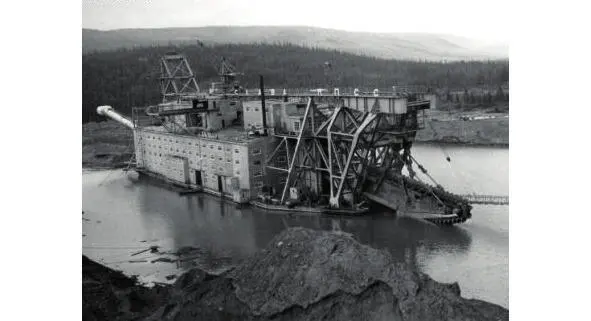
The world’s largest river scoop dredge
In addition, the plant created equipment that is now installed on almost all blast furnaces of the former Soviet Union. Not to mention that the largest plants of ferrous and non-ferrous metallurgy in Russia are equipped with semi-continuous casting machines manufactured by IHMP. Although only two workshops remain of the former greatness, today the enterprise is being revived. In 2012 it received an order to manufacture metal structures for the cosmodrome “Vostochny”.
Immediately behind the former buildings of IHMP Ushakovka River begins – another waterway of Irkutsk. Initially it was called Ida, but in 1681 the merchants brothers Ushakovs built a mill on it and they began to be called by their last name. In the past, it caused a lot of trouble for the city by floods, and its mouth stretched for 400 m. However, today the river is unrecognizable – it has become very shallow, the water is not drinkable, and the hydrogen sulphide springs, which made its waters curative in the past, were filled up during the development of the quarry inside the city.

Ushakovka River
We are crossing Ushakovka River along the Znamensky bridge, which appeared near the mouth by 1868 and find ourselves in the suburb of Marat. Once upon a time at this place was the building of the Admiralty, which located in Irkutsk from 1754 to 1839. and managed the Pacific Fleet, as well as subsequently the affairs of Russian America. At that time, the capital of Eastern Siberia already had its own navigation school and shipyards; factories for the production of ropes, shipbuilding materials, anchors; there was a spinning mill, a resin factory, hemp shops and much more.
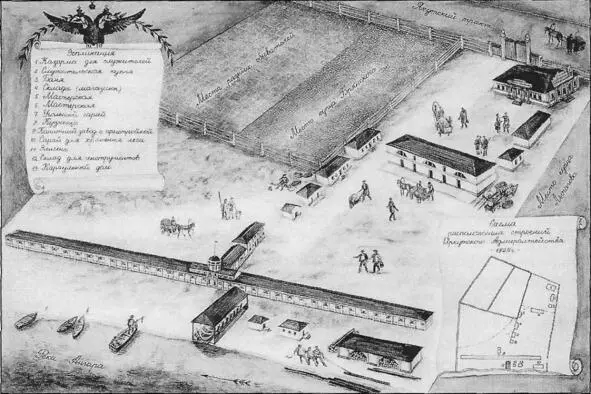
Admiralty in Irkutsk
Monastery of Icon of Our Lady of the Sign
We go around the transport ring around the “Admiralty Grove” and arrive at the complex of the oldest nunnery in the Angara region, founded here in the name of Icon of Our Lady of the Sign in 1689. Despite its remoteness, the monastery has always attracted a lot of attention. In 1708 a first Russian Emperor Peter the Great personally sent the Gospel to here, which is still preserved in the monastery in a heavy silver frame. In 1741 the daughter of the favourite of the Peter’s court A.P. Volynsky – Anna, was forced to spent here about six months. As gratitude for the care shown to her here she presented the altar gospel.
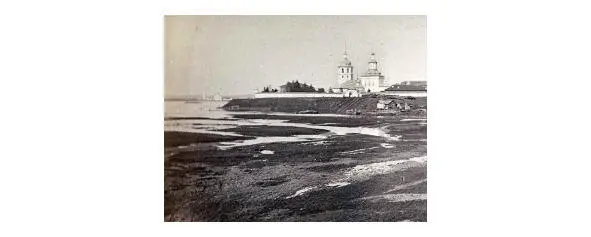
Nunnery in the name of Icon of Our Lady of the Sign
The first to meet us is the only monument in Russia to the admiral and Supreme Leader of Russian Empire A.V. Kolchak, which was installed here on the 130th anniversary of his birth on November 4, 2004 according to the project of V.M. Klykov and at the expense of the famous Irkutsk criminal authority S.V. Andreev.
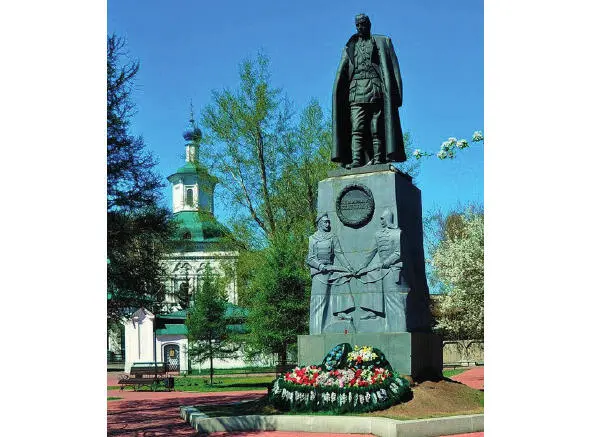
Monument to admiral A.V. Kolchak
Irkutsk was a fateful city for A.V. Kolchak. He was here six times (1902, 1903, 1904, 1911, 1918, 1920). Firstly, he was married in Irkutsk on March 5, 1904 in St. Charalambos church on his only wife S.F. Omirova, who came to Verkhoyansk for him from St. Petersburg. From here, right after the wedding, he went to war with Japan, crossing Lake Baikal on foot along the ice railway. Finally on February 7, 1920 A.V. Kolchak was shot in the Irkutsk prison castle, and his body was thrown into an ice-hole of the Angara River, where the nuns of the Monastery of Icon of Our Lady of the Sign took water. Therefore, the location of the monument is not accidental: opposite the mouth of the Ushakovka River at the intersection with the former Yakutsk Tract (nowdays Rabochego Shtaba street), along which A.V. Kolchak first entered Irkutsk in 1902, returning from an expedition to search for Sannikov Land (a phantom island in the Arctic Ocean).
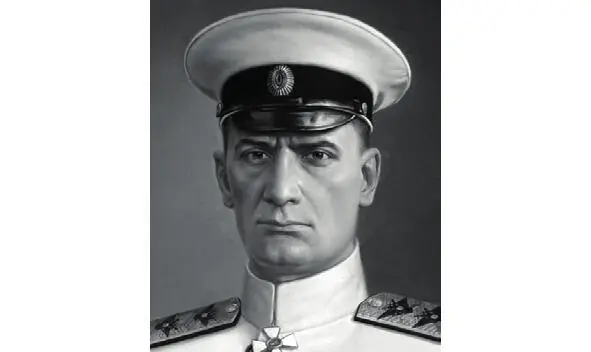
Admiral A.V. Kolchak
Every year, the court hearings do not subside with the demand to dismantle the monument to the “tyrant and executioner”. However, it is worth recalling that whole world polar expeditions to this day are carried out according to the methods developed by A.V. Kolchak. It was not without reason that he was the fourth person in history to be awarded the Konstantine gold medal – the highest award conferred by Russian Geographical Society.
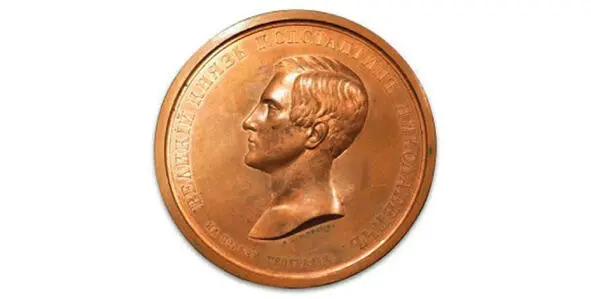
Constantine Medal of IRGS
Читать дальше
